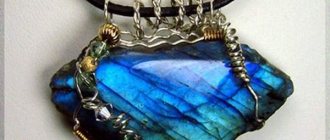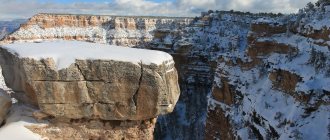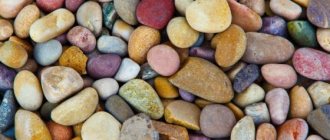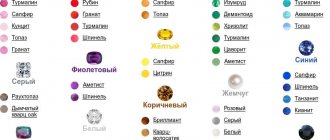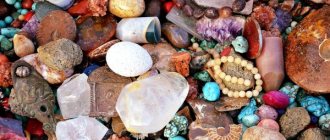Natural stone materials types
The following most important types of rocks and natural materials are most widely used in construction:
- I. Igneous (igneous) rocks: a) deep-seated massive: granites, syenites, diorites, gabbro;
- b) massive eruptions: porphyry, porphyrite, diabase, basalt, andesite, trachyte;
- c) loose clastic: volcanic ash, pumice;
- d) clastic cemented: volcanic tuffs.
- a) chemical precipitation: gypsum, anhydrite, some types of limestone, dolomite, magnesite, calcareous tuff;
- a) modified igneous rocks - gneisses;
The use of natural stone materials in our construction is constantly increasing, new regional quarries are being organized with comprehensive mechanization of the extraction and processing of stone, crushed stone, gravel and sand, as well as piece stone products.
Classification of kidney stones
By number of stones:
- single;
- two- or three-concrete;
- multiple.
By location:
- one-sided;
- bilateral.
Diet for phosphate kidney stones
By form:
- coral-shaped;
- flat;
- with spikes;
- round;
- with edges.
By location:
- in the kidneys;
- in the ureter;
- in the bladder.
To size:
- small (about the size of the eye of a needle);
- average;
- large (sometimes reaching the size of the entire kidney).
By chemical composition:
- struvites;
- oxalates;
- urates;
- phosphates;
- carbonates.
According to the organic component:
- protein;
- xanthine;
- cystine;
- cholesterol
Different types of kidney stones, depending on their composition, size, location and location, are treated with different methods. For some, taking medications is enough. Others can only be removed by surgical intervention.
Classification of sedimentary rocks
Dividing natural materials into groups allows us to better study their properties and characteristics. The classification of sedimentary rocks is based on knowledge about the composition and structure of materials. Systematization of rocks according to these characteristics is necessary for the successful use of lithology for the analysis and development of the planet’s subsoil.
Clastic
Clastic rock consists of fragments of minerals, remains of organic bodies, including calcareous skeletons of animals, marine life, tree branches, and trunks. The fragments can be large - more than 10 millimeters, or small - up to 0.01 millimeters. The fragments have different shapes, sometimes resembling a circle or sphere.
The group of clastic rocks usually includes:
- sands;
- silts;
- pebbles;
- products of their decomposition.
It happens that rock fragments are firmly held together by a clayey substance. This is natural cement, which can consist of siliceous, carbonate, ferruginous, and clayey impurities. Clastic rocks have a very low density, ranging from 1.2 to 2.0 grams per square centimeter.
Colloidal-sedimentary
This type of material includes rocks with an earthy porous, oolitic, legume and nodule structure. Typical examples of colloidal sedimentary rocks include:
- clay;
- mudstones;
- clayey shales.
Scientists also include other common types in the group of materials of this colloidal-sedimentary origin. Vivid examples are the formations of aluminous, including laterites and bauxites, ferruginous, manganese composition.
Chemogenic
Common genetic types of sedimentary rocks include groups of sulfate and halide materials. This classification is determined by the composition and conditions of occurrence of chemogenic materials.
Sulfate rocks include:
- anhydrite;
- gypsum.
Halide materials form mineral deposits that are actively used by humans in various industries. Examples of such breeds are:
- rock salt;
- carnallite;
- sylvinite
Biochemical
Biochemical rocks are formed at the bottom of lakes, seas and oceans. These include:
- limestones;
- shell rock;
- dead corals;
- reef limestone;
- planktonic and foraminiferal silt;
- lake chalk;
- diatomites (diatomaceous oozes);
- sapropels (algal oozes);
- peat on land.
What stones are suitable for creating jewelry?
Academician A. Fersman in the 20th century proposed the following classification of stones suitable for complementing jewelry, which is still used today:
1. Precious stones of the first order, semi-precious stones. These are, of course, sapphires, chrysoberyls, diamonds, emeralds, alexandrites, rubies, and pearls. It is noteworthy that the last type of stone is distinguished by its mineral origin. The most valuable are clean, transparent, smooth stones. Precious stones that have cracks, high levels of turbidity, and uneven coloring lose a lot of value. 2. Semi-precious stones of the second order. The cost of stones included in this category is definitely lower than the price of gems. However, they also take place in jewelry production. Among the main types of stones, it is worth highlighting topaz, amethyst, opal, beryl, phenacite, opal, and pink tourmaline. It is interesting that the impeccable transparency and beauty of tone increases the cost of second-order stones and makes it equal to the first. 3. Ornamental stones. It should be noted right away that stones from this category are expensive if they are considered rare. In other cases, they are not of particular value, are easily accessible and are used only to complement budget jewelry. This category includes the following stones: tourmaline, amber, quartz, turquoise, jade, rock crystal, etc.
Not everyone knows that stones may have another purpose. For example, artists can use small crumbs of stones when decorating their paintings, and traditional healers can use them to treat various ailments.
Sawing or stabbing?
There are two ways to open geodes with crystals - “fast” (using a hammer and chisel directly during collection) and “slow” (at home, on a diamond disk). If you have a lot of strength, space in your backpack and your own stone-cutting workshop, then the second method is definitely better. The question is - how much? To answer this, I’ll give you some personal statistics.
Average trip to Rusavkino : about thirty geodes were collected, injected on the spot. Five or seven turned out to be ordinary cobblestones that looked like geodes, one or two not particularly interesting ones split unsuccessfully and were immediately sent to the dump, three of them took pride of place in the collection, a dozen were given away... In the rest, the crystals had long grown together into a homogeneous mass that was of no interest to anyone when sawing, not when splitting. Polished saw cuts would be suitable for brooches, but there is a lot of fuss with them, and we have stone-cutting raw materials that are more interesting.
Departure to Staritsa : about the same number of geodes were collected, all were thoroughly washed, sorted and taken home unopened. Geode-like stones were identified after washing and left in place. Based on the results of the autopsy in a home workshop: twenty pieces of average quality were used as gifts, two took a place in the collection, the rest were of no interest. The whole day was spent (they worked with two pairs of hands), one diamond disc was killed, the backpack began to tear at the seams.
"Harvest" from white clays. Underground quarries of Staritsa. In the foreground is an open cavity with crystals and the original appearance of the geode before cleaning.
Of course, there are exceptions to every rule: if it is known that the deposit contains geodes with relatively inconspicuous crystals, the space around which is filled with colorful layers of agate, the chip will not reveal the beauty of the stone, and you just need to saw it. In other cases, the first method is quite good, especially if your hand is already full.
Natural (natural) stone materials in construction
Stone slabs can be of different thicknesses. The well-known ancient dolmens are made of slabs up to forty centimeters thick. Broken thinner strata or slabs yield both block stone and bed stone, or flagstone and flakes.
Block natural stone is characterized by more or less even sides and parallelepiped-like appearance. The dimensions of such a stone vary along the edges from 10 to 100 centimeters. Larger stones are already known to us as blocks. A block stone is always bedded, which means that any two opposite sides of it are approximately parallel and even. In block stone, in most cases, all opposite sides are smooth and relatively parallel. The flatness of a stone is its ability to “creep”, that is, to lay stably due to its shape. Block stone is an excellent material for construction.
A bedded stone differs from a block stone in that it usually has only two smooth parallel sides, so it looks like fragments of slabs. Thanks to the chipping, bedded stone can become a block, so it is a good stone material for construction.
Flagstone is characterized by its absolute similarity to fragments of thin stone slabs. The thickness of the flagstone is from one centimeter to five to ten centimeters. This type of stone, with its flat sides, shows certain irregular polygonal shapes. Flagstone is an excellent material for cladding walls, blind areas and steps.
Plates are a thin stone material whose name speaks for itself. The thickness of the plates is less than one centimeter. The plates are convenient for cladding walls, ceilings, and in a set of mosaic patterns and panels.
Sedimentary rocks produce not only slabs, flagstone, bedded stone and plates, but also the above-described blocks, rubble, crushed stone, gravel and various round timber, but not only that. When exposed to groundwater, sedimentary rocks, primarily limestone, produce the so-called karst stone.
Karst stone is characterized by the massive presence of holes and gouges in its forms. This is a kind of fragile decorative stone material.
Causes of stone formation
If acute pain occurs in the lower abdomen and back, accompanied by severe nausea, you should consult a urologist or nephrologist. These are the first symptoms of kidney stones.
Several factors contribute to this:
- A metabolic disorder that causes an excess of salt crystals to appear in the urine.
- Poor urination due to insufficient water intake.
- Infectious infection of the genitourinary tract.
- Insufficient content in the body of special substances responsible for keeping salts in a soluble state.
- Regular use of diets that promote irregular and unhealthy eating.
Depending on the type of neoplasm, the reasons for their appearance may be different. Therefore, in order to establish what exactly influenced the deterioration of health, you need to know how to determine the type of kidney stones.
Weekend tour. We mine amethysts and topazes in the Murzinka mines
Having read about the Murzin mines, the first thing I thought was: “Oh, there are also amethysts there?!” Then I realized that I had confused Murzinki, mistaking that distant, precious one for my own, dear one, near Novouralsk, to which my father took us on a school trip. There is also a quarry there, where optical quartz was mined, and we, fifth-graders, found “crystal brushes” in the dumps, brought them home, cleaned them with acid, and gave them to our mother. At the last meeting of classmates, we remembered this trip, and I asked the graying boys what happened to the quarry. They said that it was overgrown with bushes, in the spring there was a swamp and in general it became somehow small or we had grown a lot.
Recently, my father came to stay with me for a couple of weeks and we decided to go to another, semi-precious Murzinka: take a ride in a good car and look at the Gray Urals.
List of the most common rocks used by humans
Rocks, depending on their composition, method of formation, chemical characteristics and structure, are divided into classes and groups, which include individual minerals. It is difficult to describe all rocks. Some classes include from several dozen to hundreds of different elements.
The table shows a list of the most popular and widespread natural resources.
| Class | general characteristics | Group | Name |
| Silicates | Contains silicon and silicic acid salts. | Feldspars |
|
| Mica |
| ||
| Clayey |
| ||
| Soap | |||
| Chrysotile |
| ||
| Carbonates | These are minerals containing carbonic acid salts. | Calcite |
|
| Basic |
| ||
| Oxides | Found in all types of rocks. Contain oxides of various substances. | Quartz |
|
| Chalcedony |
| ||
| Hydroxides | Sedimentary rocks. | Limonite | |
| Opal |
| ||
| Sulfides | Compounds of metals with sulfur and non-metals. | Pyrite |
|
| Sulfates | Salts of sulfuric acid. | Gypsum |
|
Many rocks are composed of elements belonging to different groups of fossils.
The most interesting of them:
- Granite. Contains mica, quartz and feldspars.
- Sandstone. It is formed from fragments of various rocks, which are cemented by various minerals.
- Slate. They are characterized by a layered structure formed by the compression of several rocks.
https://kamnemir.ru/articles/geology/#
https://interneturok.ru/lesson/geografy/5-klass/litosfera-tvyordaya-obolochka-zemli/gornye-porody-mineraly-i-poleznye-iskopaemye
https://moykamen.com/galereya/gornye-porody-kamnej.html#i-7
Gold
When talking about natural treasures, this is the first thing that usually comes to mind. Gold is really expensive. However, the main difficulty is its extraction. Not all gold miners succeed in acquiring wealth, but even the process of mining this metal itself is beautiful. On the other hand, you probably won't regret mining gold. You'll enjoy the sun, the water, the beautiful scenery and maybe even find a real gem.
So what will you need?
Fossil fuels
Combustible (or fuel) minerals are a type of mineral resource characterized by the property of combustion. And they are used mainly as a source of thermal energy. The main types of fuel minerals include oil, natural gas, hard and brown coal, peat, anthracite and oil shale.
The combustion of all of the above types of fuel releases large amounts of energy. This is facilitated by carbon, which is contained in all, without exception, combustible minerals. It is impossible to imagine the life of a modern city without oil, from which gasoline is obtained, or without gas, which is used to heat many residential buildings. Coal is widely used in heavy industry, in particular in thermal power engineering and ferrous metallurgy.
Ambergris
One day the media reported that a British resident, while walking along the beach, found a piece of ambergris worth several dollars. This is a really expensive find that can bring you extra money too.
What is ambergris? This is a waxy substance that forms in the whale's intestines and is then spewed out. Sometimes such lumps end up on the beach, where anyone walking can find them.
You may not know, but ambergris is used in the perfume industry. This is a rather rare and incredibly expensive substance that is used to make luxury perfumes. It is not surprising that ambergris is highly valued in the market. Currently, a record has been set that is more than a million dollars for a piece of ambergris found by chance.
Main advantages
- Flexibility. The main quality that determines its widespread use in finishing works. Applying the material to simple curves does not require the use of additional tools or special skills. In fact, anyone who knows how to hang wallpaper can handle flexible stone finishing. To decorate surfaces with strong bends at significant angles with stone, it is recommended to use a heat gun.
- Ease. Thanks to this, the material does not increase the load and can be used to cover the thinnest surfaces.
- Porosity and moisture resistance. It has a structure that allows the passage of not only light, but also steam. This makes it possible to use flexible stone for decorating a variety of lamps, as well as finishing bathrooms, baths and other rooms with high humidity.
- Fire resistance. Withstands significant increases in temperature without changing its properties, due to which it can be used for finishing stoves and fireplaces.
- Decorative. A flexible stone, the disadvantages of which as a decorative material have not been identified, is almost always unique. It is difficult to find options with the same pattern due to the huge variety of sandstone. Various inclusions of elements give the material different colors and shades. For example, clay adds red and brown, iron adds rich brown, and sandstone itself can be gray, yellow, and even pink.
- Manufacturability. The material is light, flexible, can be cut even with simple scissors and is very easily glued to the base. The technology of wall cladding with flexible stone is available to anyone who does not have special skills or special tools.
- Wide operating temperature range and durability. A flexible stone, the disadvantages of which can be assessed in comparison with a simple stone, lasts about 35 years. If you use special impregnations, the service life can be increased. Operating temperature varies from -40 to +70 degrees Celsius.
- Environmental friendliness. Flexible stone is a completely natural material, as it consists of environmentally friendly components. It does not burn, and when heated it does not emit substances harmful to nature.
Money under your feet: natural treasures that can be sold for profit
Many people puzzle themselves every day with the question of how to make money? Some of them get hired jobs, others build their own businesses, etc. However, few people think that nature itself gives people the opportunity to earn income if they use natural treasures, from which they can easily make money.
What natural treasures can you find for free and sell?
Types of marble and its colors
Natural marble is a stone with amazing properties and a wide palette of shades. Its color and structure are directly dependent on the admixtures of minerals and organic matter.
- White. A unique stone, the color of which indicates the absence of additional impurities, is the main material for the manufacture of sculptures and figurines due to its easy processing and unusual appearance. Some examples of white stone have thin veins of different colors.
- Black. Rare volcanic rock mixed with bitumen or graphite is used as an exclusive finishing material. The most valuable are samples with golden inclusions or veins.
- Green. The color saturation and variety of shades depend on the amount of iron silicates (tremolite, serpentine) in the stone. Veins of white and brown shades are possible, which give the stone a wavy or branched pattern.
- Red. An expensive and unusual stone, the shades of which are provided by the presence of iron oxide in the composition. Acts as a strong and durable material that is easy to process. Temples and palaces were built from it in past centuries. Today it is an expensive finishing stone, which is used to decorate formal halls and premises.
- Grey. Fine- and coarse-grained stone may contain veins of gray colors (from light to deep dark), as well as dark yellow, white and pink shades. It is resistant to harmful influences, easy to process and polish.
- Beige. The warm shades of the stone (from almost white to light brown) and the intricate pattern on the surface provide an admixture of manganese and limonite. It has high strength, so it is often used for flooring and other surfaces exposed to mechanical stress.
- Pink. The saturation of the shade depends on the percentage of iron oxide in the rock. The structure of the pattern contains veins of dark shades of green. Various surface treatments make marble products unique and elegant.
- Blue. The main background of this stone is white and gray colors. The blue tint is provided by the veins and the richness of their color.
- Blue. The rich blue color of this rare and expensive stone is provided by an admixture of diopside. Depending on the percentage of impurities in the main composition of the rock, colors can vary from dark blue to dark purple.
- Yellow. A bright and “warm” stone of sunny color with an unusual pattern created by golden shades and beige stains. Used for the manufacture of finishing tiles, window sills, countertops and decorative elements.
- Brown. It has a palette of shades from light brown to dark chocolate, which is manifested due to the admixture of iron carbonate, manganese and limonite in the main composition of the rock. Brown stone is characterized by the presence of a light pattern, which makes it unusual and beautiful.
Marble is also divided not only by color, but also by where it was mined. Below are the most popular and beautiful types of stone:
- Carrara marble. A unique milky-white stone, sometimes shimmering with a delicate blue tint, is mined near Carrara in the depths of the Apuan Alps. The most valuable type of marble from which the world's works of art are made. Michelangelo's famous sculptures are made from this snow-white mineral.
- Sayan marble. The stone of white, pink and cream colors with a wave-like pattern is mined in one of the oldest deposits in Russia - the Sayan mountain range. A hard, easy-to-work material from which many small-sized products are produced.
- Jurassic marble. Dense marbled limestone, which contains a high percentage of biological fossils (corals, algae, sponges), thanks to which the stone pattern acquires uniqueness and living beauty. The only deposit of stone is the Altmühltal park in Bavaria. The properties and essence of the rock are not marble, but it received its name in the Middle Ages due to its susceptibility to polishing.
- Ufaley marble. A stone with gray shades with a blue tint and white veins that form a striped pattern. It is used for the manufacture of architectural and decorative elements (vases, balls, statues and sculptures), and also acts as a beautiful facing material. Production is carried out in the Ufaleyskoye field in the Eastern Urals of Russia.
General classification
The abundance of classifications of precious stones is due to the fact that specialists in different fields identify different qualitative characteristics of gems that are necessary in their business and divide stones into types in accordance with such characteristics.
There are classifications based on:
- chemical composition of crystals;
- origin of stones;
- sizes;
- flowers;
- crystallographic parameters;
- processing methods;
- cost;
- medicinal properties;
- purpose.
The first scientifically based classification demonstrating which stones are precious was formed in 1860 by the German scientist Kluge, who divided stones not only into precious and semi-precious, but also into different classes, according to their physical characteristics. Subsequently, knowledge about stones increased and the classification was supplemented.
The simplest and most accurate is the division of stones into groups according to their purpose:
- jewelry;
- jewelry and ornaments;
- ornamental.
Today, the most complete and widespread is the classification of gems by the scientist Kievlenko, which takes into account both the purpose and cost of precious stones.
According to this classification, gems are divided into groups and orders within these groups:
Jewelry stones
- 1st order: diamond, ruby, emerald, blue sapphires.
- 2nd order: orange alexandrite, purple and green sapphires, black opals, jadeite.
- 3rd order: spinel, fire and white opals, topaz, aquamarine, tourmaline, rhodolite.
- 4th order: peridot, zircon, beryl, turquoise, amethyst, citrine.
Jewelry and ornamental stones
- 1st order: lapis lazuli, jade, malachite, charoite, amber, rock crystal.
- 2nd order: agate, hematite, obsidian.
Ornamental stones
- jasper;
- onyx;
- pegmatite;
- quartzite.
How to cleanse crystals?
The internal space of many cavities with crystals has a very bizarre configuration: clay or lime chips can get clogged into the curved “pockets” at the preparation stage, or even earlier. To minimize the risk, it is best to wash the geodes thoroughly before opening them. In addition, in nature there are very beautiful brushes that have been lying in water or clay for a long time in an already opened form: in this case, the heads of the crystals will look completely unsightly. Often, when looking at them, one can judge only the approximate size of the crystals, but not the color, degree of preservation and perfection of the cut. If it is reliably known that it is only quartz and there is no easily soluble calcite in the sample (or it does not form crystals, but only crusts, which would be nice to remove), there is a very cheap, fast and effective method of purification. The cheapest solution for cleaning plumbing containing oxalic acid (large bottles are sold in many supermarkets) is diluted with warm water in a ratio of 1: 3 – 1:4 and place a druse, brush or geode there for several hours (preferably overnight). To speed up the process, the mixture can sometimes be slightly shaken. The product remarkably dissolves yellow and white deposits on crystals, calcareous clay, calcite crusts, and even the misfortune of all aquarists - black algal deposits (if the sample, for example, was taken from a river).
Druse of rock crystal. R. Derzha, Tver region. The maximum size of the crystals is 1.5 cm. The sample was removed from the river and cleaned of the black coating that completely covered the crystals.
What are the fractions (sizes) of natural building stones (with photos)
If we continue our acquaintance with stones according to the principle from large to small, then on the surface of the earth the largest stones will be rocks, and then boulders.
Stone fraction is the size of natural stone, expressed in millimeters. In quarries, if they are not in the mountains, the largest stones will be blocks. What are the sizes of natural stones mined for the stone processing industry? This is a rather extensive question. They are very different. There are stone building materials, which are real monuments ranging in size from 5 to 10 cubic meters. Such natural stone materials are of considerable value due to the difficulty of extraction and transportation. They are intended for monumental monuments or architectural structures. They are also called monoliths.
Monoliths often reach a length of 30 meters. Sometimes monolithic varieties of natural stones can be a fallen part of the rock, that is, an oblong block.
Where to dig?
In any case, not in places that are unique natural landscapes. Disassembling a picturesque natural wall or the stone bed of a small waterfall in search of crystals is the same as handing over an antique bronze sculpture for non-ferrous metal. Abandoned and reclaimed limestone quarries (as well as active ones with free access) will bring much more material, and without remorse for your conscience. This should also include fresh collapses in underground quarries - with the caveat that you need to work there with the utmost caution, being content only with lifting material from the surface, and not digging your own adit. And in the bed of another river near Moscow, you can collect more potentially interesting geodes in an hour than will be extracted from the bedrock in a day of hard work. To the question “more specifically?” I will answer - “everywhere!” To be honest, I have not yet come across a single limestone quarry in which there were no crystals at all.
Source
Stones from a chemical point of view
As already noted, by their nature the elements in question are rocks. Therefore, from a chemical point of view, a stone is a substance. The composition is usually determined by a combination of various metal oxides and their salts.
For example, the chemical composition of the well-known emerald and ruby is almost the same - aluminum oxide AL2O3. The color varies due to different impurities of other elements and light absorption capacity.
We can name several chemical groups of compounds that underlie the composition of all natural, including precious, stones:
- native elements (diamond - C);
- halides;
- sulfides;
- oxides;
- phosphates;
- borates;
- sulfates;
- feldspars;
- scapolites;
- sadolites;
- carbonates;
- silicates;
- grenades.
Each group has its own types of stones, numbering in hundreds of varieties. They can differ not only in composition, but also in color, shape, size, transparency, and density.
Wild berries and other products
Having gone into the forest to pick flowers, you may come across a clearing of wild berries. You shouldn't ignore it. After all, this is another natural treasure from which you can earn extra money.
Some people hate picking berries but would enjoy eating them. Use this idea to make money. Go to the same forest or to a sunny meadow to pick wild blueberries, raspberries or blackberries. Once you collect enough crops, you can sell them and earn money. This may not be the biggest income. However, you will be working outdoors. At the same time, you won’t pay a penny for the berries themselves, which grow in the wild.
In a similar way, you can earn money by collecting other wild fruits. For example, it is enough to visit an abandoned apple or pear orchard and come out with buckets full of ripe fruits that you can sell.
Your clients can become not only ordinary people, but also entire catering establishments that need the food products that you offer. However, to do this, you will have to agree with management on such cooperation.
Rauchtopaz
Do you know what rauchtopaz stone is? In fact, this is not topaz at all, but the most natural smoky quartz. Undoubtedly, topaz and quartz are very similar in appearance, but the density of the second is one third lower. There are a lot of disputes and proposals for a new name for the stone, they have been going on for centuries, but jewelers do not have a consensus on this issue.
Some rauchtopazes amaze with their size, reaching a meter in length, or weighing almost 200 kilograms. Others are famous for their color and transparency. The most popular stones are those without defects and with a predominant golden hue.
Rauchtopaz is credited with healing properties. Some native tribes use shards of smoky quartz to perform surgical operations, claiming that it heals wounds much faster.
In the fight against systemic pathologies, lithotherapists offer applications from this stone. It is believed that massage with polished smoky quartz will help get rid of skin rashes and eliminate swelling.
The richest deposits are located in Brazil, the stone is also found in the USA and the Alps.
Flowers
If you live in a big city, you may have seen street vendors selling bouquets of flowers that florists throw away. In fact, this is another affordable way to sell what you get for free.
However, you can collect flowers in another way. To do this, you need to go to the nearest forest or field. Of course, you should not pick endangered species of flowers that are listed in the Red Book. However, no one is stopping you from collecting daisies, daisies and other wildflowers. Also, do not neglect the fern leaves, which will become a stylish touch in your bouquet.
You can make bouquets and sell them in foil wrapping, or put them in inexpensive vases and double the price.
Types of classification of natural stones and minerals
Minerals are identified by their place of origin, composition and structure. In order to separate valuable specimens from decorative stones, a classification of natural specimens was invented according to common characteristics and differences.
Scientists and philosophers have been developing it for a long time. Today there are several techniques that gemologists use. The most popular of all existing types is considered to be the classification of natural stones and minerals by Kluge and Bauer. The German researcher Kluge divided raw materials into 5 groups. The first three were dedicated to precious samples.
Bauer's version was replenished with jewelry and semi-precious stones. Mineralogist Fersman diversified the document by dividing the types of precious stones into classes. The changes made by the scientist Kievlenko concern price and application. The latest edits were made by Melnikov, who proposed a classification of precious crystals into 3 varieties.
The development of jewelry making in the USSR, which occurred in the second half of the 20th century, forced the creation of a unified industrial methodology. It is still successfully practiced today.
